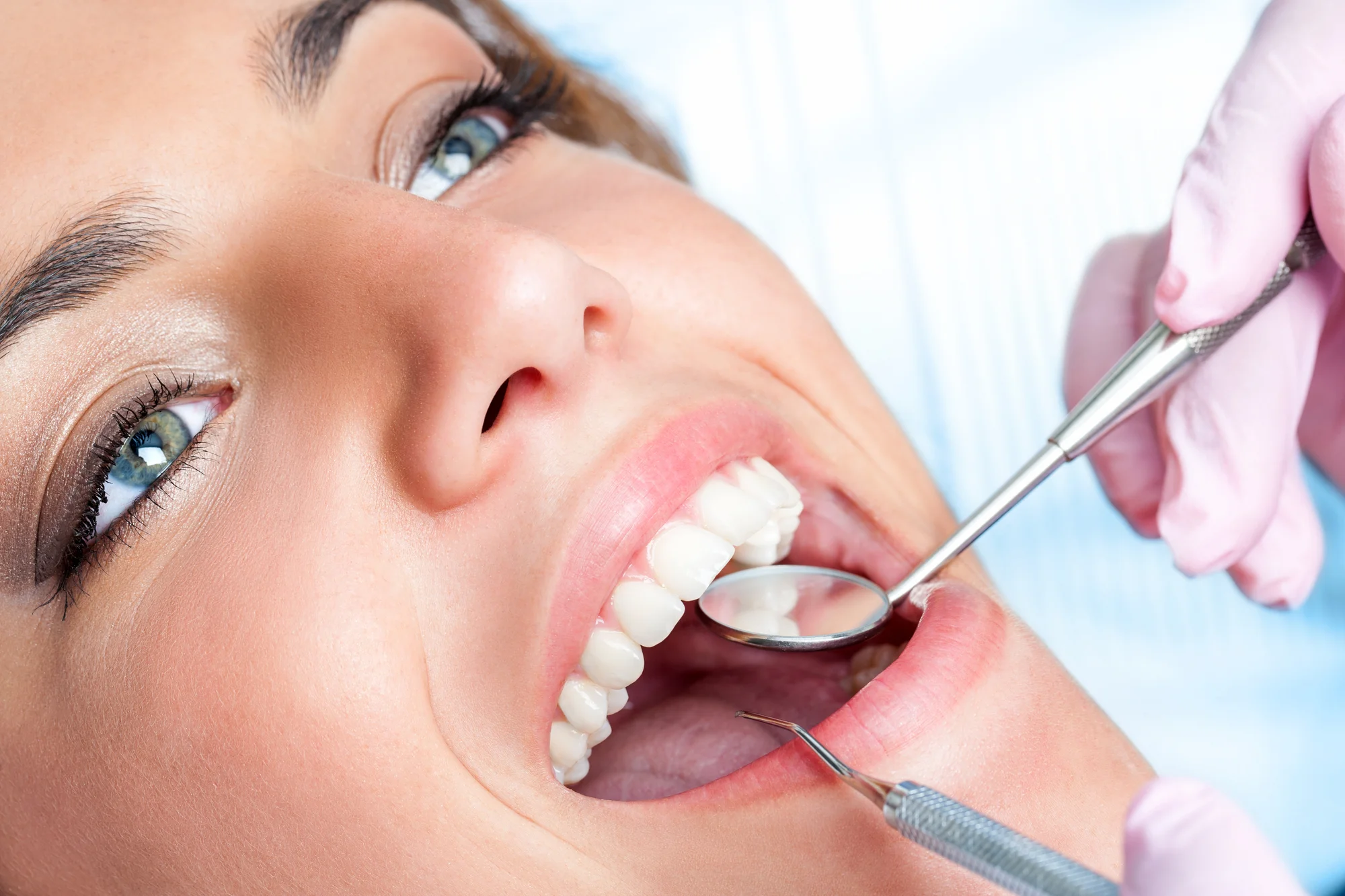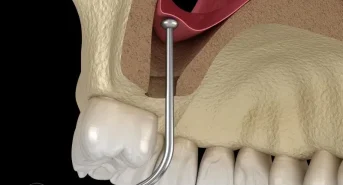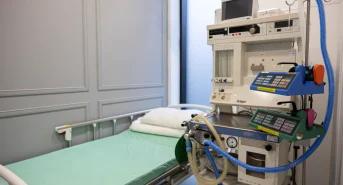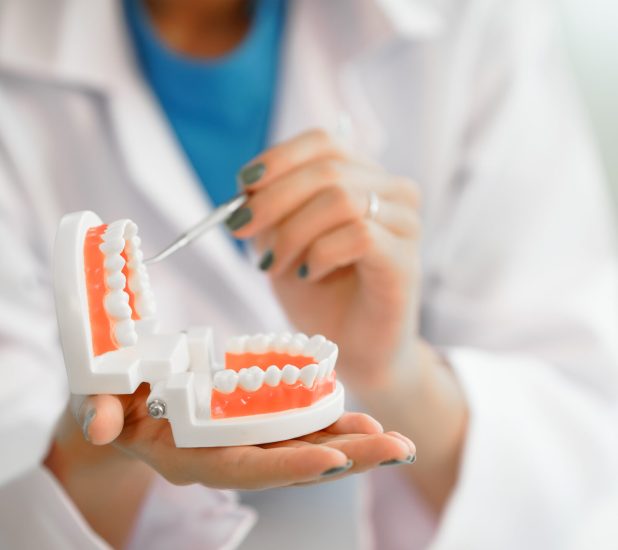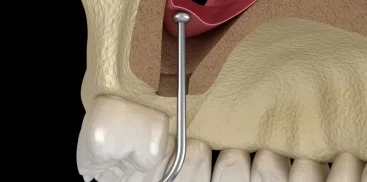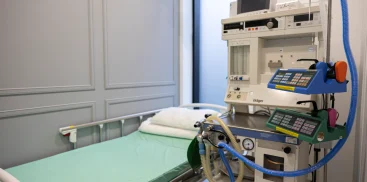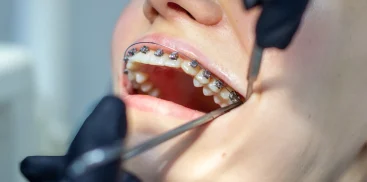Dental crowns and prosthetic bridges are permanent restorations that cover or replace damaged and lost teeth. They are placed to protect and strengthen damaged teeth. Unlike dentures, they are not removed and cleaned every day. Crowns and bridges are an increasingly popular way to improve the appearance of your teeth.
When should you put a crown on your tooth?
It is worth opting for a dental crown replacement after root canal treatment, when tooth reconstruction is generally necessary.
Installing a crown is also recommended if the teeth are worn or otherwise damaged, or severely damaged, e.g. by large carious cavities. Dental crowns are also placed in cases such as:
– the need to protect a weak tooth from breaking;
– fixing the prosthetic bridge;
– implant coverage;
– covering a deformed tooth;
– the need to protect teeth with congenital lack of enamel.
It also happens that crowns are prosthetic replacements in the case of complete toothlessness.
They are then placed at the final stage of implant treatment. There are also contraindications to the installation of a crown. The condition of the tooth must allow for this type of restoration.
– This is not possible in the case of: tooth remnants above the gum smaller than 2-3 mm;
– damaged teeth due to caries reaching the gum level or beyond.
In such situations, the crown of the remaining tooth is usually clinically lengthened and a temporary crown is placed.
After about six months, when the technician in the laboratory works on making a prosthetic crown, the temporary crown is replaced with the final one at a separate visit.
What types of prosthetic crowns are there?
There are several types of prosthetic crowns. They are distinguished by, among others:
due to the degree of tooth coverage:
– partial – covering only a fragment of the tooth, made of high-quality gold.
This type of prosthetic restorations are placed on a living tooth and attached to the space above the neck, so they do not irritate the tooth. ąsł.
Nowadays, they are used quite rarely due to their high price, hard-to-find material and unsatisfactory dental aesthetics;
– complete – which are among the most commonly used crowns and allow the reconstruction of the shape, function, size and aesthetics of the tooth.
In the case of this type of crowns, the dentist carefully profiles their contours, thanks to which maintaining proper oral hygiene does not pose any major problems;
Another division of types of dental crowns is used depending on the type of material from which they are made:
– porcelain crowns on a metal or ceramic base.
A porcelain crown on a metal base is most often placed in the case of reconstruction of side teeth;
– Porcelain crowns on a gold base are recommended for teeth severely damaged by caries.
This metal has a bacteriostatic effect;
– zirconium oxide crowns – with exceptional strength and resistance to mechanical damage, which means that this type of crown can be placed both as a restoration in the front part of the mouth and in its side parts;
– all-ceramic crowns – with an extremely aesthetic appearance, which are difficult to distinguish from natural teeth.
An all-ceramic crown is an ideal replacement for damaged front teeth;
– full-metal crowns – used widely in the past, now they are used very rarely.
Older metal crowns are most often replaced by crowns made of more natural materials: porcelain or zirconium oxide;
– Composite or acrylic crowns are most often temporary crowns.
In some cases, however, it is also possible to make a prosthetic crown from them.
The dental crown was traditionally cast in special molds.
However, the development of technology has significantly changed the way crowns are made.
They can now be formed using a 3D scanner and precise milling machines.
If necessary, the tooth crown can also be veneered with porcelain by firing or pressing.
Crowns – what does the procedure look like?
putting on crowns? Dental crowns can be installed in just two visits to the dentist’s office.
During the first visit, the teeth are prepared (grinded), impressions are taken and the color of the teeth around the area being treated is checked.
A temporary crown is placed on the polished tooth, which protects it and ensures comfort for the patient thanks to its aesthetic appearance.
During the second visit, the temporary crown is replaced with ready-made permanent crowns.
Local anesthesia is used both during the preparation procedures and when installing the crown, making the procedure painless for the patient.
Crowns for front teeth and veneers
Veneers are thin shells made of acrylic, composite or porcelain.
They are glued to the tooth on its outer (face) side.
This is an ideal solution for people who have healthy, undamaged teeth (or have undergone all necessary procedures to cure their teeth), but want to improve the aesthetics of their smile and regain the snow-white color of their teeth.
People whose teeth are damaged by deep caries, fractures or cracks should consider a prosthetic crown.
Root canal treatment, which generally involves quite a significant loss of natural teeth, will also require the placement of a crown to restore the natural anatomy and functionality of the mouth.
Dental crowns at Warsaw Dental Center
The Warsaw Dental Center, a dental clinic in Warsaw, uses the highest quality materials, which allow both the placement of crowns on implants and the use of a crown-root post.
We use a crown-root post to strengthen teeth treated with root canals, which allows us to largely preserve the natural teeth. The experience of the staff and the pleasant atmosphere in the office allow you to fully take care of the condition of your teeth and enjoy the durability of the restorations made with the utmost care at Warsaw Dental Center
Article written on September 30, 2022 and updated on February 21, 2024 based on the latest technology and research.
